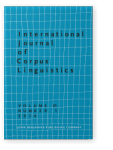Building a parallel corpus of German/Swiss German Sign Language train announcements
We present a parallel corpus of German/Swiss German Sign Language train announcements. The corpus is used in a statistical machine translation system that translates from German to Swiss German Sign Language. The output of the translation system is then passed on to an animation system, the result being a sign language avatar representation on a mobile phone. Building the parallel corpus consisted of four steps: translating the written German train announcements into Swiss German Sign Language glosses, signing the announcements in front of a camera on the basis of the gloss transcriptions, notating the signs in the video recordings in a form-based sign language notation system, and adding information about non-manual features. The resulting corpus contains 3,241 sentence pairs, which makes it a large parallel corpus involving sign language.
References (25)
Battison, R
(
1978)
Lexical Borrowing in American Sign Language. Silver Spring, MD: Linstok Press.

Boyes Braem, P
(
1995)
Einführung in die Gebärdensprache und ihre Erforschung. Hamburg, Germany: Signum.

Boyes Braem, P
(
2012)
Evolving methods for written representations of signed languages of the Deaf. In
A. Ender,
A. Leemann, &
B. Waelchli (Eds.),
Methods in Contemporary Linguistics (pp. 411–438). Berlin, Germany: Mouton de Gruyter.


Church, K.W., & Mercer, R.L
(
1993)
Introduction to the special issue on computational linguistics using large corpora.
Computational Linguistics, 19(1), 1–24.

Dreuw, P., Ney, H., Martinez, G., Crasborn, O., Piater, J. Miguel Moya, J., & Wheatley, M
(
2010)
The SignSpeak project: Bridging the gap between signers and speakers. In
Proceedings of the 7th International Conference on Language Resources and Evaluation (LREC)
(pp. 476–481). Valletta, Malta.
Ebling, S
(
2013)
Evaluating a Swiss German Sign Language avatar among the Deaf community. In
Proceedings of the Third International Symposium on Sign Language Translation and Avatar Technology (SLTAT)
. Chicago, IL. Retrieved from
(last accessed December 2, 2015).
Ebling, S., & Glauert, J
(
2013)
Exploiting the full potential of JASigning to build an avatar signing train announcements. In
Proceedings of the Third International Symposium on Sign Language Translation and Avatar Technology (SLTAT)
. Retrieved from
(last accessed December, 2015).
Ebling, S., & Glauert, J
(
2015)
Building a Swiss German Sign Language avatar with JASigning and evaluating it among the Deaf community.
Universal Access in the Information Society (pp. 1–11). Berlin, Germany: Springer. Retrieved from
(last accessed December, 2015).

Elliott, E., Glauert, J., Kennaway, J.R., & Marshall, I
(
2000)
The development of language processing support for the ViSiCAST project. In
Proceedings of the 4th International ACM SIGACCESS Conference on Computers and Accessibility (ASSETS)
(pp. 101–108).
Forster, J., Schmidt, C., Hoyoux, T., Koller, O., Zelle, U., Piater, J., & Ney, H
(
2012)
RWTH-PHOENIX-Weather: A large vocabulary sign language recognition and translation corpus. In
Proceedings of the 8th International Conference on Language Resources and Evaluation (LREC)
(pp. 3785–3789).
Forster, J., Schmidt, C., Koller, O., Bellgardt, M., & Ney, H
(
2014)
Extensions of the sign language recognition and translation corpus RWTH-PHOENIX-Weather. In
Proceedings of the 9th International Conference on Language Resources and Evaluation (LREC)
(pp. 1911–1916).
Hanke, T
(
2001)
ViSiCAST Deliverable D5-1: Interface definitions. Technical report, ViSiCAST project. Retrieved from
[URL] (last accessed November 2015).
Jennings, V., Elliott, R., Kennaway, R., & Glauert, J
(
2010)
Requirements for a signing avatar. In
Proceedings of the 4th LREC Workshop on the Representation and Processing of Sign Languages
(pp. 133–136).
Johnston, T
(
2008)
Corpus linguistics and signed languages: No lemmata, no corpus. In
Proceedings of the 3rd LREC Workshop on Representation and Processing of Sign Languages
(pp. 82–87).
Klima, E., & Bellugi, U
(
1979)
Signs of Language. Cambridge, MA: Harvard University Press.

Koehn, P
(
2005)
Europarl: A parallel corpus for statistical machine translation. In Proceedings of the 10th Machine Translation Summit (pp. 79–86).
Morrissey, S
(
2008)
Data-driven machine translation for sign languages. (Unpublished doctoral dissertation). Dublin City University, Dublin, Ireland.
Pizzuto, E., Rossini, P., & Russo, T
(
2006)
Representing signed languages in written form: Questions that need to be posed. In
Proceedings of the 2nd LREC Workshop on Representation and Processing of Sign Languages
(pp. 1–6).
Prillwitz, S., Leven, R., Zienert, H., Hanke T., & Henning, J
(
1989)
HamNoSys: Version 2.0: An Introductory Guide. Hamburg, Germany: Signum.

Sáfár, E., & Glauert, J
(
2012)
Computer modeling. In
R. Pfau,
M. Steinbach, &
B. Woll (Eds.),
Sign Language: An International Handbook (pp. 1075–1101). Berlin, Germany: De Gruyter Mouton.

Stein, D., Schmidt, C., & Ney, H
(
2012)
Analysis, preparation, and optimization of statistical sign language machine translation.
Machine Translation, 26(4), 325–357.


Stokoe, W
(
1960)
Sign language structure: An outline of the visual communication systems of the American deaf.
Studies in Linguistics: Occasional papers, 81, 1–41.

Zeshan, U
(
2012)
Sprachvergleich: Vielfalt und Einheit von Gebärdensprachen. In
H. Eichmann,
M. Hansen, &
J. Heßmann (Eds.),
Handbuch Deutsche Gebärdensprache (pp. 311–340). Hamburg, Germany: Signum.

Cited by (1)
Cited by 1 other publications
Hodge, Gabrielle, Kazuki Sekine, Adam Schembri & Trevor Johnston
2019.
Comparing signers and speakers: building a directly comparable corpus of Auslan and Australian English.
Corpora 14:1
► pp. 63 ff.

This list is based on CrossRef data as of 4 july 2024. Please note that it may not be complete. Sources presented here have been supplied by the respective publishers.
Any errors therein should be reported to them.
